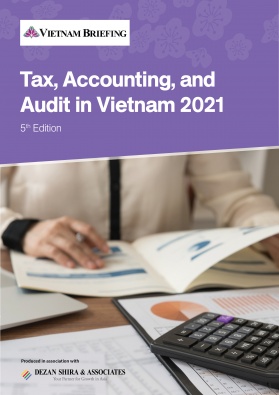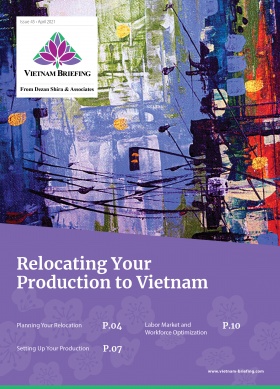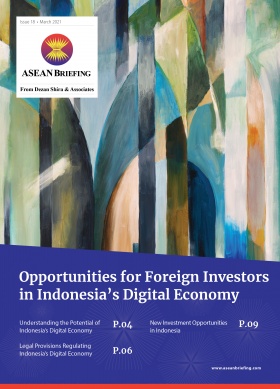Vietnam’s Transport Infrastructure Master Plan: Three Proposals for Implementation
What’s in Vietnam’s US$65 Billion Transport Infrastructure Master Plan?
In April 2021, Vietnam’s transport ministry announced its transport infrastructure master plan between now and 2030, which is estimated to cost between US$43 billion and US$65 billion.
Under the master plan, Vietnam will build thousands of kilometers of new expressways, high-speed rail routes, deepwater ports, and new international airports. The government hopes Vietnam can achieve a cargo transportation capacity of 4.4 billion tons per year, and a road transport capacity capable to move 2.76 tons of cargo and 9.43 million passengers per year.
The state is playing catch-up to supply adequate infrastructure to keep the economy growing quickly. Vietnam’s economy is structured around investments, manufacturing, and exports, whereby investments flow into specific areas with particular endowments such as a large supply of cheap labor force, then value-added products are manufactured or processed before being exported. This is a similar development model that propelled Singapore, Taiwan, and South Korea into high-income nations.Moreover, an important contributor to the success of those three countries was their ability to transport infrastructure that could handle increasing trade volumes. As Vietnam looks to increase its manufacturing capacity, it is crucial that its roads, airports, seaports, and rail connections can facilitate this increase.
Three proposals for the implementation of the master plan
The Development and Strategy Institute — an industrial research institute under the Ministry of Transport — has developed three proposed three options for the implantation of the master plan.
First proposal
Under the first proposal, estimated to costs between (US$39 billion and US$43 billion, roughly one percent of GDP), the government will construct a total of 5,000km of expressways, along with the completion of the Long Thanh International Airport, located in Dong Nai province. Once completed, this will be the biggest in Vietnam and could serve 100 million passengers annually.
The first proposal also involves the completion of the Lach Huyen Port, a deep-water port in the city of Hai Phong. The port is one of the first public-private partnership (PPP) projects between Vietnam and Japan and will accommodate container ships between 4,000 twenty-foot equivalent (TEU) and 6,000 TEU, and the potential for 8,000 TEU.
Lastly, the first proposal includes the construction of two high-speed railways between Hanoi and Vinh, and Ho Chi Minh City (HCMC), and Nha Trang.
Second proposal
The proposal will cost between US$43.3 to US$53.3 billion to implement and will also involve the construction of 5,000km of expressways in Vietnam, completion of the two high-speed railways, in addition to completing two railway sections that link to the Lach Huyen Port, and to the Tan Cang – Cai Mep Container Terminal.
The second proposal will also see the completion of Hanoi’s Noi Boi airport, the expansion of HCMC’s Tan Son Nhat airport, and the completion of the second phase of the Long Thanh airport. Other airports destined for expansion include the Dien Bien airport and the Con Dao airport.
In addition to airport expansion, the second proposal focuses on dredging waterways between Hai Phong City and Phu Tho province and upgrading the Cho Gao Canal that links HCMC and the Mekong Delta.
Third proposal
The third proposal is expected to cost the most, estimated at between US$60 billion and US$65 billion. The proposal features many of the projects in the first proposal with additional railways in different parts across Vietnam.
New PPP law to set the framework for these transportation projects
The enactment of Vietnam’s new public-private partnership (PPP) law, which took effect in January 2021, will be at the center of the success of these complex projects.
Under the new PPP framework, investors engaged in the transportation, healthcare, education, transmission grid, and water sectors can receive benefits ranging from a reduction in corporate income tax, credit support, and a reduction in land lease fees, among others.
To qualify, the project’s value must be at least VND 200 billion (US$6.2 million), except for education and healthcare projects where the value is half this amount. The equity capital contribution of private investors must be at least 15 percent of the total investment capital.The new PPP law also implements a revenue-sharing scheme. If the PPP project revenue is greater than 125 percent of the revenue forecasted in the project’s financial model, the state will receive 50 percent of the revenue in excess of the 125 percent threshold. If, however, revenues are less than 75 percent of the forecasted revenue, the state will share 50 percent of the downside below the 75 percent threshold.
The government will provide investors with a guarantee of the availability of foreign currency to fulfil their needs in respect to the project for activities such as the transfer of profits and capital transactions. Under the new PPP law, such guarantees are limited to 30 percent (previously 100 percent) of the projected revenue after project expenses.
Furthermore, investors committed to using domestic content, contractors, materials, and goods will also be eligible for preferential treatment during the tender process.
About Us
ASEAN Briefing is produced by Dezan Shira & Associates. The firm assists foreign investors throughout Asia and maintains offices throughout ASEAN, including in Singapore, Hanoi, Ho Chi Minh City, and Da Nang in Vietnam, Munich, and Esen in Germany, Boston, and Salt Lake City in the United States, Milan, Conegliano, and Udine in Italy, in addition to Jakarta, and Batam in Indonesia. We also have partner firms in Malaysia, Bangladesh, the Philippines, and Thailand as well as our practices in China and India. Please contact us at asia@dezshira.com or visit our website at www.dezshira.com.







